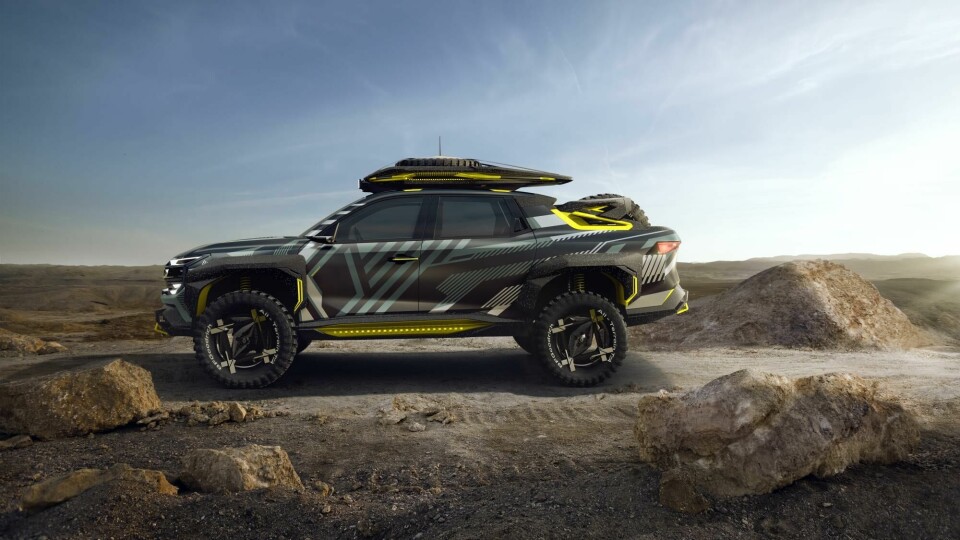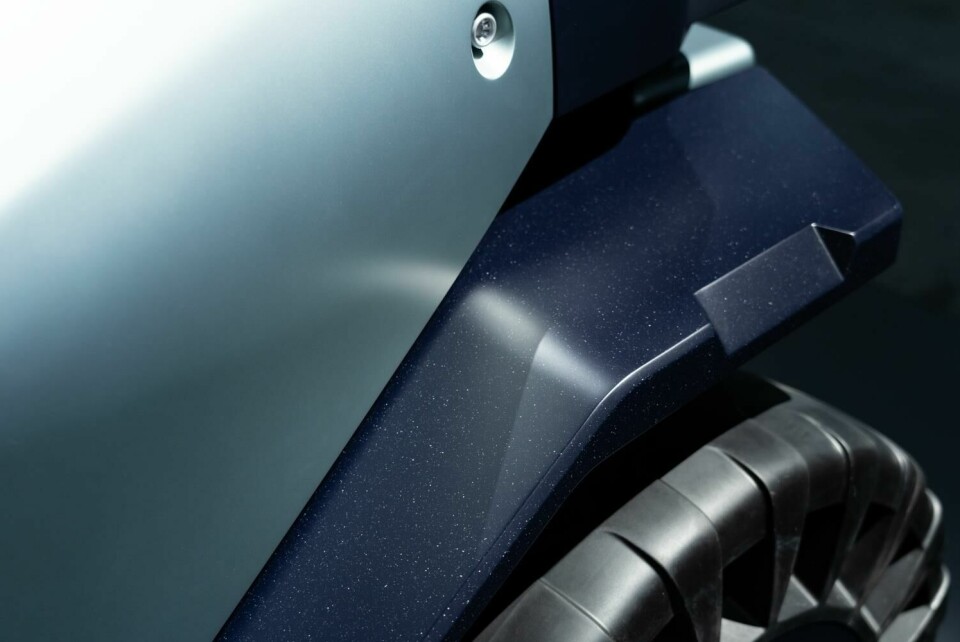
Pick-up concept previews Renault’s international push
The Niagara concept has been designed for markets like Colombia, India and Turkey where rugged off-road capabilities are crucial
Renault has revealed a concept car designed explicitly for markets outside of Europe. It is easy to see how the design differs to Renault models sold on the Continent: this is a vehicle that looks as though it could have a dig at the Dakar rally.
There are hints of the Arkana crossover-coupe about the silhouette, with a tail that seems to flick upwards (an optical illusion created by the camouflage paintwork) but otherwise it feels quite unfamiliar, very different even to the Alaskan pick-up and worlds away from heritage models like the 1952 Colorale pick-up.
The front end is upright, imposing even, with shades of the Ford Raptor about it (although not quite as gargantuan) and a chunky skidplate that hints at serious off-road prowess. It is likely inspired partly by the Renault 4EVER concept revealed in October last year, particularly from that front view but also with the roof-mounted spare tyre and chunky trim.
Spare tyres are mounted in the rear pick-up bed, with an additional set on the roof and secured with bungee straps. The subtle front head and side lights are dwarfed by the square roof-mounted spotlights, while the rear is fairly restrained by comparison with a single thing light bar – separated only by a subtle Renault badge at the centre of the rear mask. The ride height is jacked up but not comically – this is not a monster truck – and the wheels are complex but also modestly sized and clad with genuine all-terrain tyres.
Contrast trim adds extra muscle to the wheel arches, side skirts and front and rear bumpers. As we have seen on concepts like the Dacia Manifesto (also designed within the enormous Renault Group Technocentre design complex outside Paris) there are new materials on display with unconventional finishes. The contrast trims, for example, sport a speckled effect which we assume uses a similar kind of material to Dacia’s “Starkle” made of recycled plastic.

Renault design director Gilles Vidal told CDN recently that, in general, the aim is to push the limits but still produce cars that ultimately make sense. “Designs should be super-advanced but not weird – and there is a very fine line,” he said during a visit to the Paris studio. “Renault must remain a hyper-creative brand, just as it always has been, and dare to do things that have never been seen before. The future of electric mobility doesn’t have to be so dry, clinical and white. It can be more fun and more wild.”
Renault has revealed the concept as part of a push to increase its presence in markets outside of Europe – albeit ones where it is already successful, such as Latin America, North Africa, Turkey and India. There will also be a push in South Korea through a partnership with Geely Group. By 2027, the brand aims to double its net revenue per car sold outside of Europe compared to 2019. The Niagara is symbolic of these regions’ demands for vehicle design, but also this push to launch a new generation of Renault models between now and 2027.
Alongside the Niagara, the production-ready Kardian compact SUV was also revealed and will go on sale first in Latin America before hitting other international markets outside Europe. We would assume this was designed well in advance of the Niagara concept, but there is a familiar feel to the front end – particularly the front bumper design, high-mounted headlights and black mesh grille. Contrast black trim also wraps around the lower portions of the car, but with a more conservative ride height and road-friendly tyres. A more capable Captur, one might surmise.
Last week Renault also opened its new LatAm design studio in Curitiba, Brazil, where its designers will be well placed to meet the future needs of drivers in the area. Design director Vidal says the studio will ”play a major role more than ever in the design of future vehicles on Latin American markets” and will ”also contribute to the Group’s global projects by taking part in internal styling competitions for all Renault projects.” Either way, it will be interesting to see how Renault positions these non-European models against sister brand Dacia, which shares similar cheery, affordable and rugged values.












